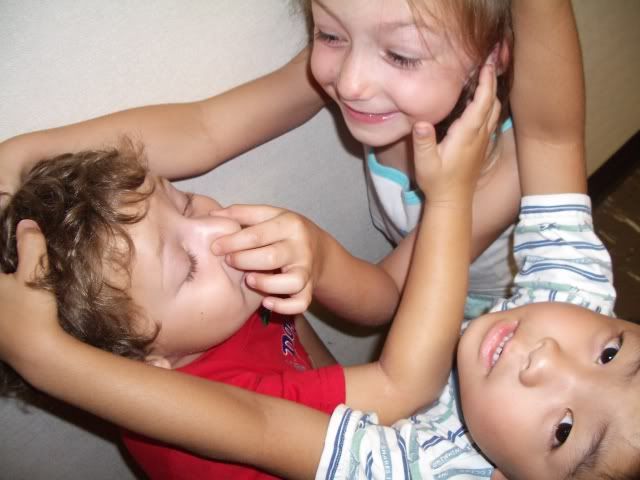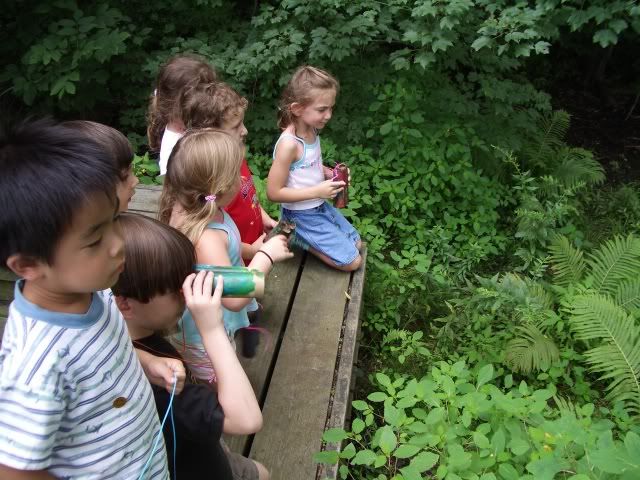May 4 - Readings and Preschool Design
The 5th dimension readings really resonated with me for preschool design because of its open ended structure and emphasis on how choice was concerned in the "curriculum." One similarity that I have drawn with after school spaces and preschool spaces is that they are both places where incorporating choice is important. In both types of settings, choice is an important part of the curriculum, and should be considered when designing a new space for such a specific purpose. For both these types of spaces, it is important to keep this choice aspect in mind so that younger children (or more inexperienced children) can work alongside teachers and older (more experienced) children. This mix also allows for adults in the classroom/space to interact individually with children, allowing for one-on-one attention.
For preschool space specifically, it is important to include spaces that are useful to the curriculum, but that are also going to be appealing so that children will want to explore and learn in them. Making the separate portions of the classroom interesting to the youngsters will hopefully draw them in during free choice time so that they can engage in something that might be different than their usual inclincation. Additionally, remembering that each smaller portion of the classroom consists within the larger classroom, and within the larger school, and within a larger area (the Jewish Community Center in our case) and within the town of Palo Alto. Because preschools are typically set up in a similar fashion to open-ended after school programs, I found that the 5th dimension readings are applicable to our design, and we should take into consideration.
Dan: Glad that the 5th Dimension reading was able to help. As an extension I wonder about preschools that are set in religious institutions and to what degree, if any, the physical context of being located inside a church say impacts the alearning that happens. I'm thinking about how the 5th Dimension program was different in the library setting as opposed to the club setting, I wonder what dedicated preschools - such as Bing are like compared to those based in churches, etc.
There are little bits and pieces of some of the other readings that I feel are very relevant to preschool classrooms. Parker and Ballantyne mention the different types of learning - in groups or individually. And in informal learning situations such as free choice time in preschool, this becomes an important aspect to consider. Developing spaces where children can be alone, in small groups and in larger groups will maximize the space for children that have different learning styles. Similar to this, Lave and Wanger bring up the notion of peripheral participants. Just as there are differents ways to learn in terms of groups, there are different "levels" of learning and "expertise." In the preschool environment, children are likely to be at different levels for different material (and this is a good thing!). This way, less experienced children can learn from those that are more experienced (for instance, in building a cabin out of lincoln logs, some can do it, some need an example, some need some help). While it's great that "novices" are learning from the "experts," the space needs to cater and challenge all of the children - at least maximizing this would be ideal. So, the types of learners and level of learners are both aspects that our group should keep in mind when designing a new space for the preschool.
Bransford and Schwartz bring up the importance of usefulness of spaces in the "real world" or after school experience. Will the child find this useful when looking outside the classroom? And preschools tend to teach children through this type of theory, in a miniature way: blocks for building, paper for painting and sand table for digging. There is so much that children should be exposed to (my own theory!), that bringing it into the classroom and introducing it in a developmentally appropriate manner could really benefit their experiences and insight on the world.



My favorite preschoolors, they love free choice! Not so relevant, but they are so adorable. =)
Dan Love the pics, thanks for sharing. I like your picking up that in a preschool there are experts and novices and in fact its okay. Space can be really important at bringing those two groups together to learn from one another.
These are great reflections, thanks for sharing. I hope you reference these throughout the next month as you work on your project
May 7 - First Thoughts on Preschool Design Project!
I really love the direction that our group has been going in thinking about what would be important to us to incorporate. We want the space to be flexible, changeable, and original. There are some important aspects that we're hoping to incorporate into our design: being able to convey different themes quickly and easily, new and original furniture/design, research on what is effective for children, and designs from different cultures (Reggio Emilia, Japanese, etc). I've been considering some interesting theories behind Japanese preschool design such as parental accessibility to classrooms and an entry way that would welcome and even force parents to enter into the classroom. Another idea that I've been trying to research included lighting, types of toys, set up of furniture, and the types of furniture that tend to be used in Japanese preschools. Themed classrooms were also common in preschools so that the children identified with their unique classroom. This could also be a consideration when developing flexible, changing rooms, where the room still retained an aspect that was unique and could help the children identify with a "team."
Hopefully we'll find get a better idea of where we're going when we visit the preschool on Tuesday morning. It'll be important to see the space and to work with the site so that we can get a better idea of what they need. This was a huge consideration in our curriculum construction class (where Lauren and I worked in the same group). It seems that we have more freedom here, and that the classroom could pick and choose from the different aspects of design, so it is very freeing. But at the same time, we're hoping that they'll utilize our design - so knowing what they need will be half the battle.